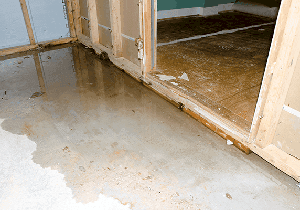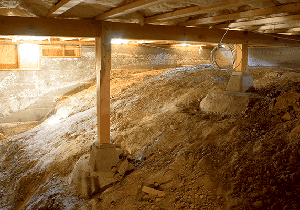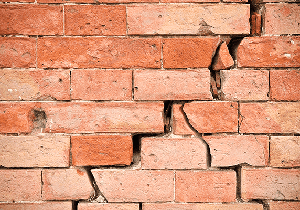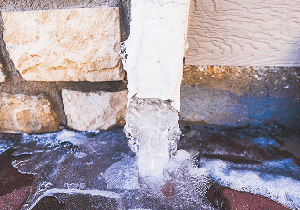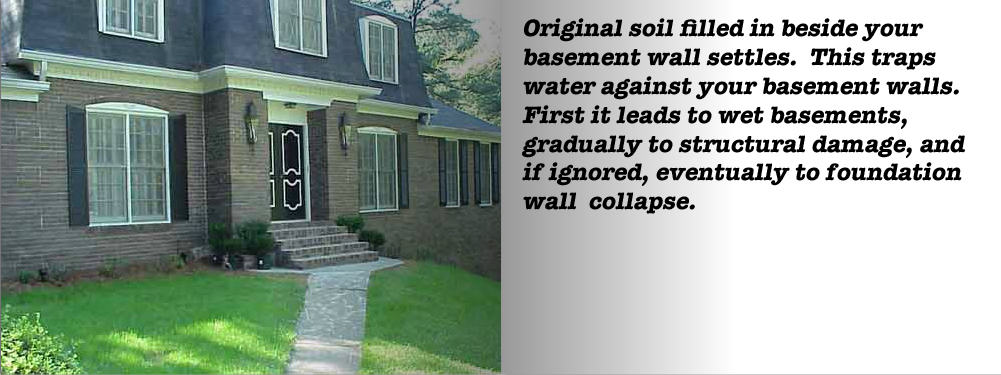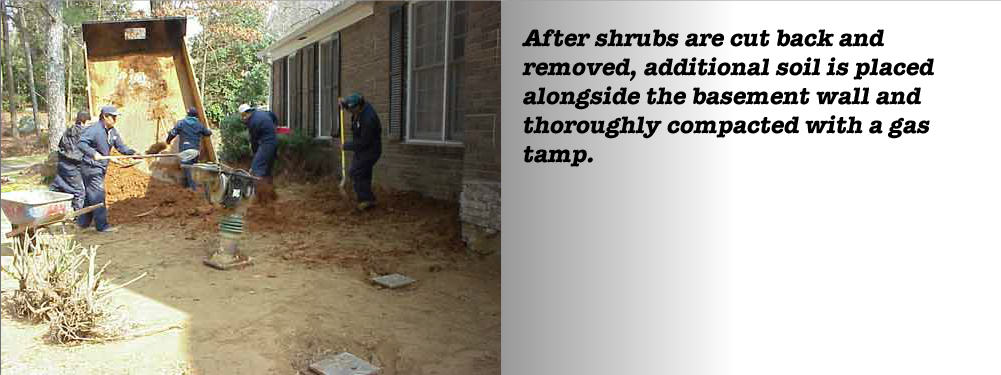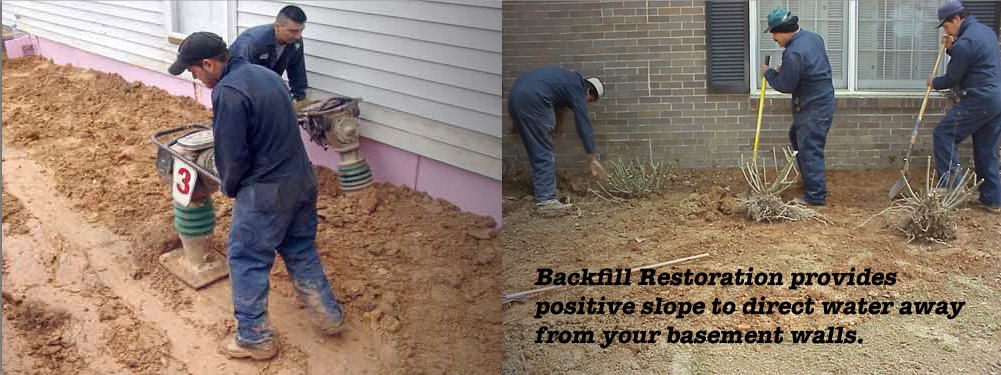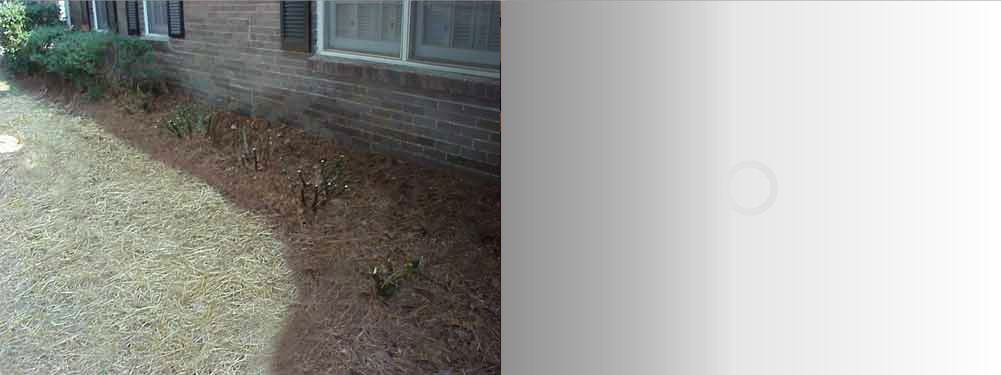Backfill Restoration
 To put it simply, basements are built in a hole. After the basement walls are built, builders push soil in to fill the open space left between the basement walls and the banks of the excavation. This area that is filled in is called the “backfill.”
To put it simply, basements are built in a hole. After the basement walls are built, builders push soil in to fill the open space left between the basement walls and the banks of the excavation. This area that is filled in is called the “backfill.”
As time passes, this soil settles and can trap water against your basement walls. First it may lead to wet basements. Then, the basement walls gradually develop long horizontal cracks, and if ignored, eventually the walls collapse. Backfill settlement is the number one cause of wet basements and caved-in basement walls.
Warning: basement walls CAN collapse!



